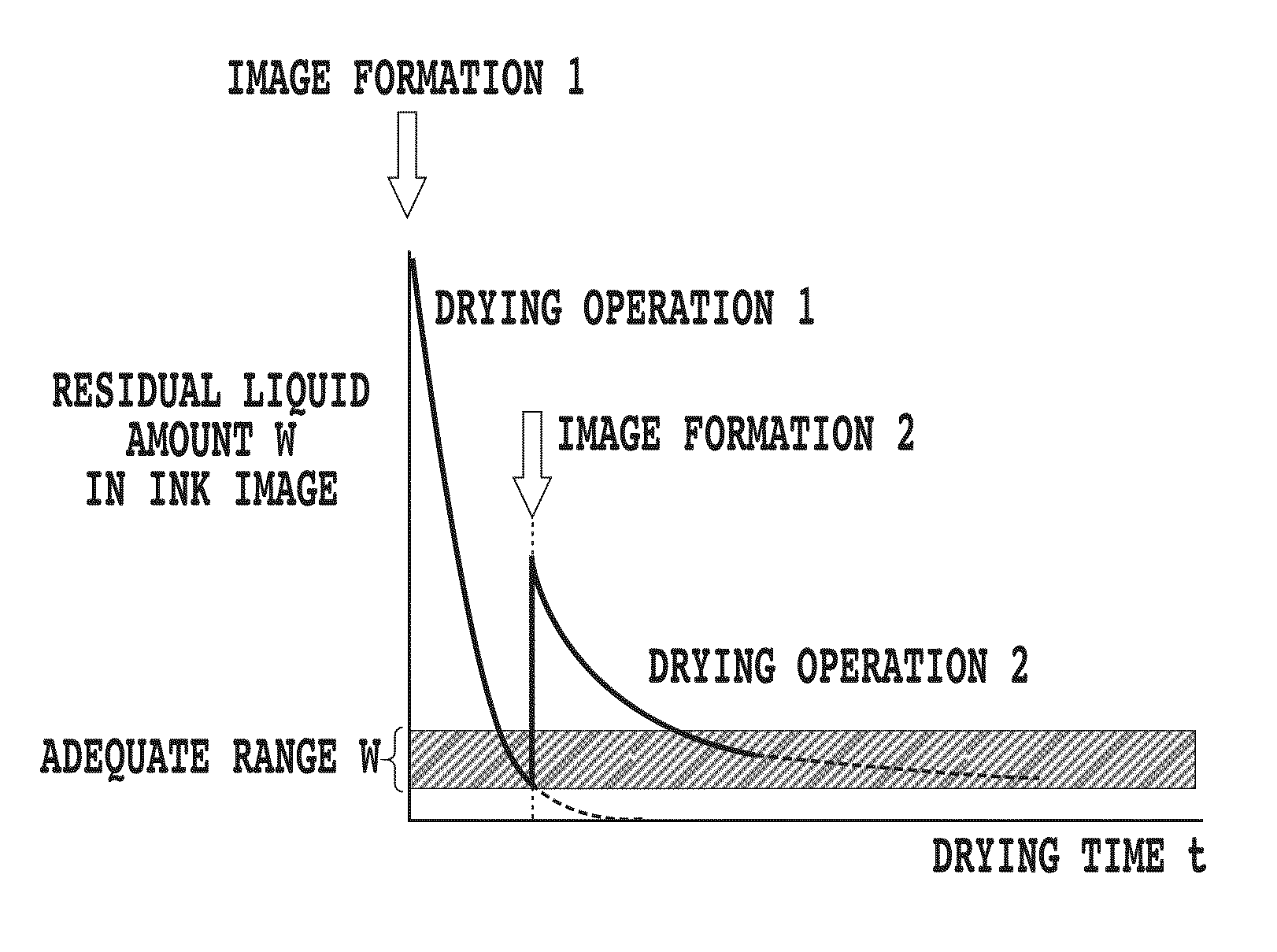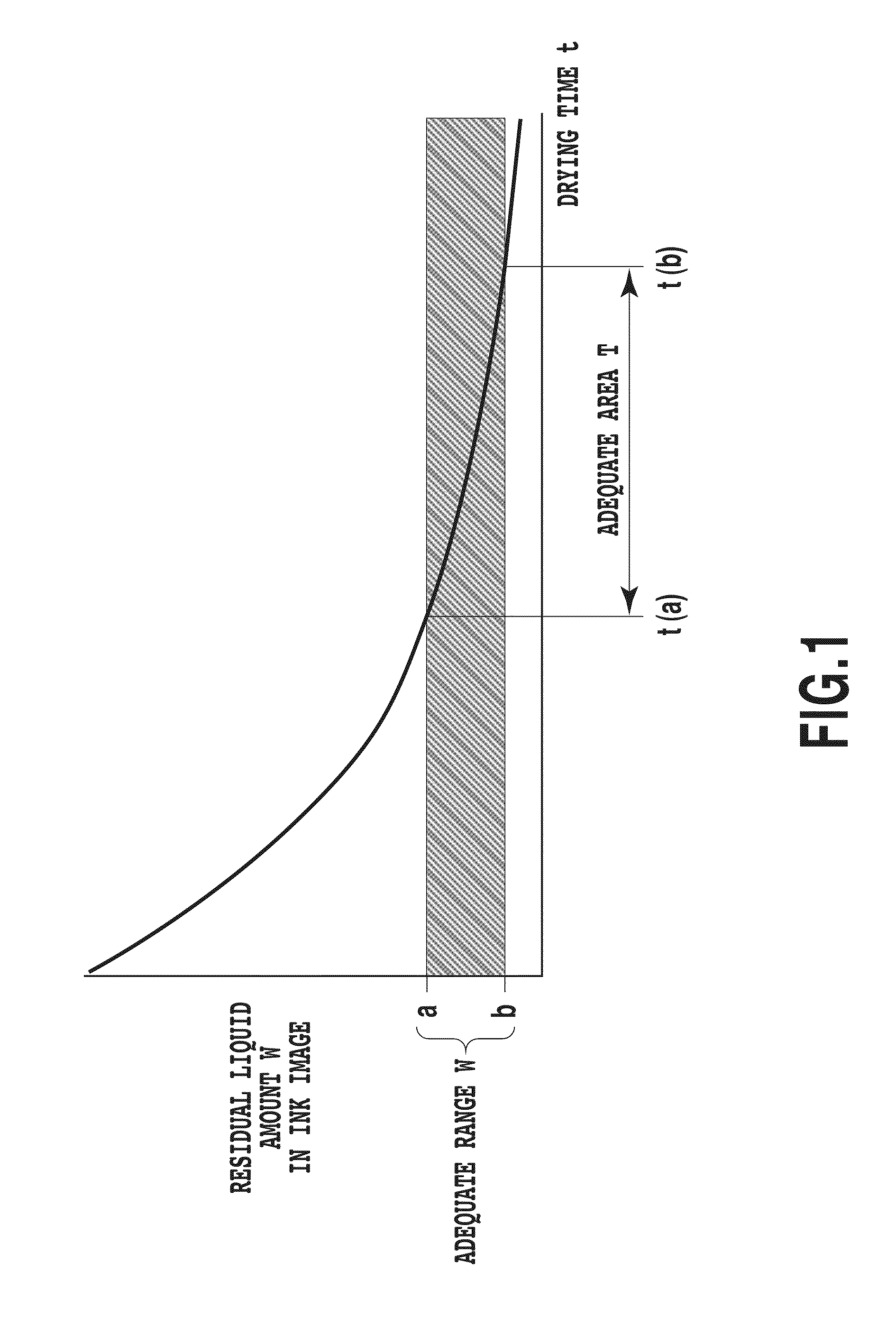Image forming method and image forming apparatus
a technology of inkjet image and forming method, which is applied in the field of inkjet image forming method and inkjet image forming apparatus, can solve the problems that prior art methods cannot achieve a balance between transfer stability and high throughput, and achieve the effects of reducing drying power, long drying time, and small value of y
- Summary
- Abstract
- Description
- Claims
- Application Information
AI Technical Summary
Benefits of technology
Problems solved by technology
Method used
Image
Examples
first embodiment
[0033]FIG. 2 is a schematic view illustrating an intermediate transfer body and configuration of its periphery of an image printing apparatus according to the present embodiment. The intermediate transfer body 1 is made up of an endless belt that is stretched around transfer body rotation rollers 2 and rotates in the direction of an arrow. Each of image forming portions 3a, 3b and 3c has an ink ejection head for ejecting ink by using an inkjet method and a reaction ejection head for ejecting a reaction liquid, which reacts on ink, by using the inkjet method. These ink and reaction liquid ejection heads respectively include ejection openings arranged across a width of the intermediate transfer body 1 that moves around and thus are called a full-line head. The image forming portions 3a, 3b and 3c respectively eject the ink and reaction liquid onto the intermediate transfer body and form an image on a surface layer of the intermediate transfer body 1. Drying portions 4a, 4b, and 4c dry...
second embodiment
[0080]FIG. 4 is a view especially showing an image forming portion and a drying portion of a printing apparatus according to a second embodiment of the present invention. The printing apparatus of the present embodiment has basically same configuration as the first embodiment shown in FIG. 2, but has following differences. The printing apparatus according to the present embodiment has two sections each of which is consist of an image forming portion and a drying portion. The first section includes the image forming portion 3a and the drying portion 4a and the second section includes the image forming portion 3c and the drying portion 4c. That is, while the above described first embodiment performs three steps of image formation and drying, the present embodiment performs two steps of image formation and drying. Among the two steps of drying, as described later with reference to FIGS. 9 and 10, the first drying by the drying portion 4a is performed with high drying power and the seco...
third embodiment
[0112]FIG. 6 is a view a printing apparatus according to a third embodiment of the present invention. The present embodiment employs an intermediate transfer body 1 provided on a drum, in a palace of a belt-like intermediate transfer body shown in the above described embodiments. The intermediate transfer body 1 is formed on a surface of a drum 20. Specifically, the intermediate transfer body is made up by adhering a silicon rubber as the intermediate transfer body to the drum 20 in a predetermined thickness.
[0113]As shown in FIG. 6, around the intermediate transfer body 1 formed on the surface of the drum, an image forming portion 3 and a drying portion 4 are provided along a rotating direction of the drum. The drying portion 4 has two parts along the rotating direction into which a range for generating an air for drying is divided, and thus is controlled to selectively generate the air from one part at an upstream side in the rotating direction or from the two parts. Further, the ...
PUM
 Login to View More
Login to View More Abstract
Description
Claims
Application Information
 Login to View More
Login to View More - R&D
- Intellectual Property
- Life Sciences
- Materials
- Tech Scout
- Unparalleled Data Quality
- Higher Quality Content
- 60% Fewer Hallucinations
Browse by: Latest US Patents, China's latest patents, Technical Efficacy Thesaurus, Application Domain, Technology Topic, Popular Technical Reports.
© 2025 PatSnap. All rights reserved.Legal|Privacy policy|Modern Slavery Act Transparency Statement|Sitemap|About US| Contact US: help@patsnap.com



